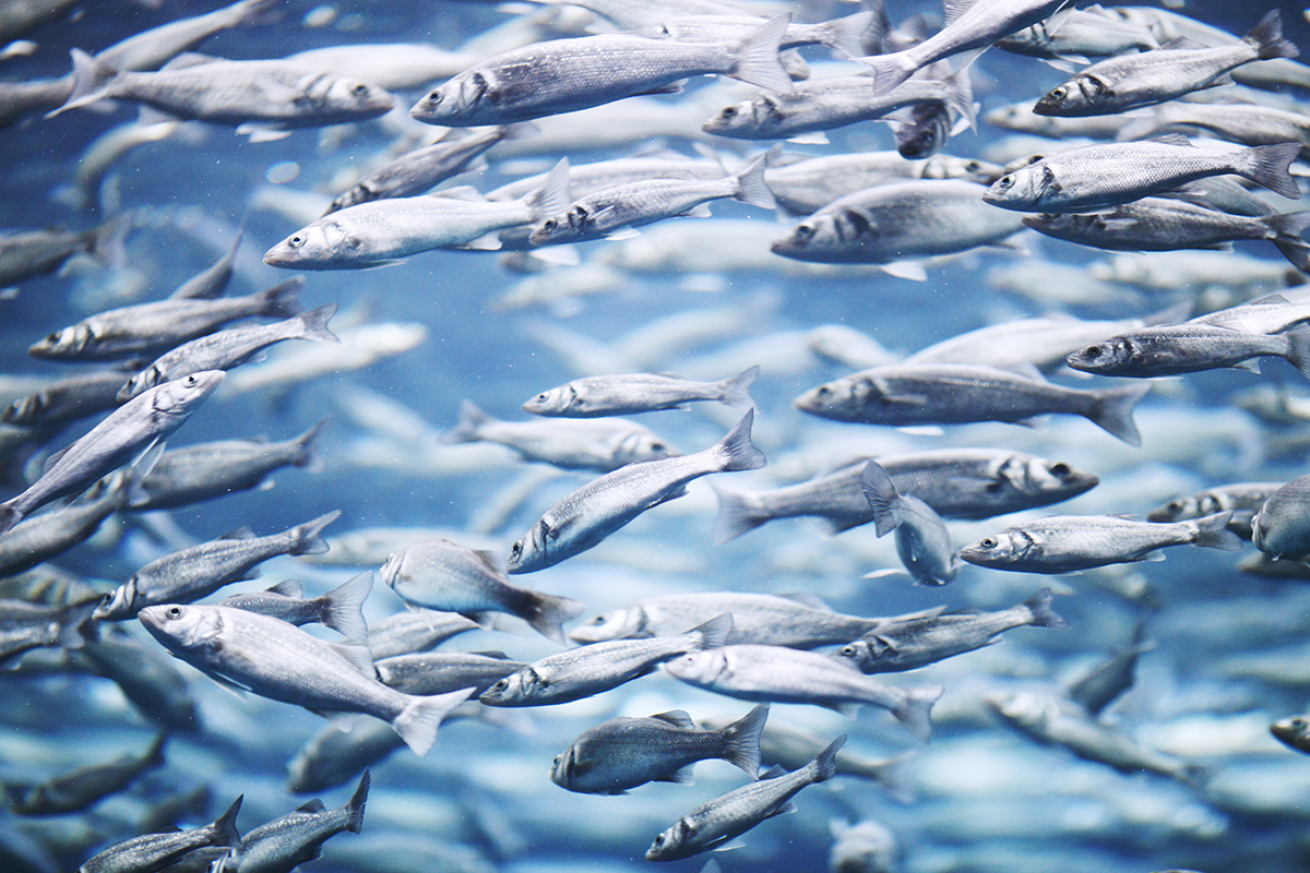Ocean Warming Could Lead to Smaller Fish, New Study Finds

Shutterstock.com/YelllowjMackerel schooling
As climate change causes the ocean to warm up, fish are at risk of becoming smaller due to the lower oxygen content of warm water, a new study finds.
This could contribute to food security issues for the approximately 3 billion people reliant on seafood as a primary protein source, as well as disruption in the commercial fishing industry.
The study, published recently in the journal Science, was led by Renato Salvatteci from the Center for Ocean and Society at the Christian-Albrecht University of Kiel in Germany. Salvatteci’s international team of researchers analyzed a sample of sediment collected from the seafloor of the Humboldt Current system, which lies off the coast of Peru. The sediment dated back to between 116,000 and 130,000 years ago, during the last interglacial period. At that time, the planet was about 2 degrees Celsius warmer than it is today, and it contained less oxygen.
“There are many lines of evidence saying that a warm ocean with less oxygen will drive [the] shrinking of the fishes of the world,” Salvatteci tells Mongabay. “But this is the first one [with] empirical evidence showing smaller fishes in the last interglacial, a period warmer than today. That’s why this paper is important.”
Looking at the sample, scientists found that about 60 percent of bones in the interglacial period sediment were of smaller species, including goby-like fish that are about half the size of anchovies. In more recent sediment deposits from the region, anchovy bones are dominant.
The species found in the sediment are said to have larger gills in proportion to their bodies, which could be why they were able to survive at all with less oxygen.
According to the research team, “environmental conditions and fish communities in the Humboldt Current are progressing toward those we reconstructed during the last interglacial.”
And factors beyond climate change are also impacting fish communities, Arnaud Bertrand, study co-author and scientist at the French National Research Institute for Sustainable Development, tells Mongabay.
“Additional pressures from fishing could also be affecting fish size and communities, so it has been hard to tell if it is the warming climate that is affecting fish size or fishing pressure,” Bertrand says. “But during the interglacial period, this fishing pressure wasn’t present.”
Peru’s anchovy industry is the world's single-largest fishery, and the Humboldt Current area contributes to 15 percent of the global fish catch each year. But catches are decreasing. The industry had its highest catch — over 13 million metric tons — in 1971, but today, the yearly average is about 4 to 8 million metric tons.
“Nobody knows when we are going to reach a tipping point, but… the peak of anchovy production in Peru has already passed,” Salvatteci says. “Maybe there will be years with huge anchovies in the ocean, but the trend is to lower anchovy biomass in the ocean in front of Peru, because of warming [and] because of the oxygenation. But we don’t know when that will happen.”










